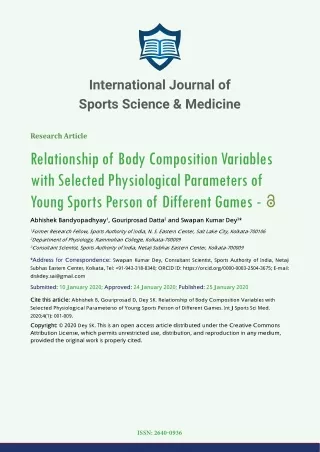International Journal of Sports Science & Medicine
Background: Cellular level body components and their impact on functional performances are still unclear in sports. The present study was aimed to investigate the sports speciufb01c alterations in body composition and physiological parameters and their relationships. Methods: Three forty-ufb01ve (n = 345) junior elite athletes (mean age, 16.5 u00b1 1.91 yrs) from diufb00erent sports disciplines (football, n = 97; hockey, n =110; table tennis, n = 75, and badminton, n = 63) were evaluated at the end of their preparatory phase. Ninety-three (n = 93) age-matched (mean age, 16.3 u00b1 1.60 yrs) sedentary boys also served as a control group. Whole body Bio-Electrical Impedance Analysis (BIA) was performed using a multi-frequency analyzer ((Maltron Bioscan 920-2, Maltron International, Rayleigh, Essex, UK). Fat-Free Mass (FFM) and Total-Body Water (TBW) were calculated using Asian based prediction equations from the manufactureru2019s software. Maximal isometric hand grip & back strength, trunk ufb02exibility and 20-meter multistage shuttle run test (bleep test; for VO2 max) were conducted followed by standard procedure.
★
★
★
★
★
107 views • 9 slides



